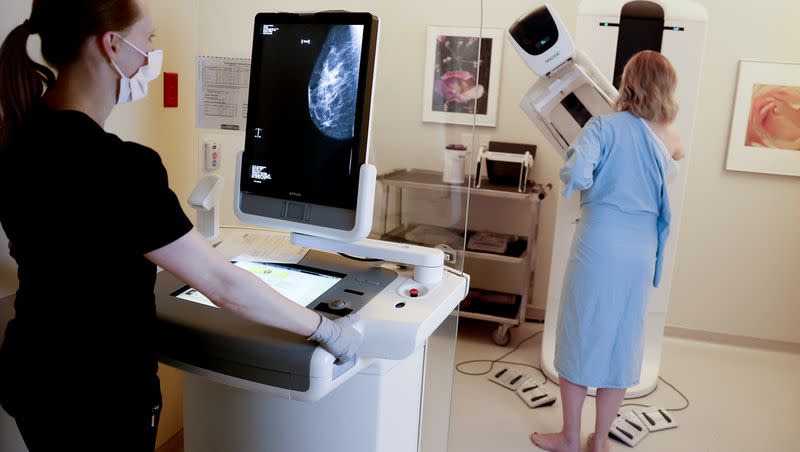Cancer cases are up, deaths are down — but some cancers are killing younger adults

For the first time, new cancer diagnoses in the U.S. are expected to top 2 million — about 5,500 cancer diagnoses a day. It’s a bad news milestone that’s softened only a little by the fact that cancer deaths have been declining. But those gains in survival could be lost as more people are being diagnosed with six of the top 10 cancers.
And breast cancer and colon cancer are being diagnosed in younger populations than in the past. In fact, those two cancers are now the lead causes of death in those under 50, surpassing lung cancer.
Additionally, experts worry that cancers related to overweight and obesity may counter gains made in cancer deaths.
That’s according to the American Cancer Society’s “Cancer Statistics 2024,” published Wednesday in CA: A Cancer Journal for Clinicians. The society has also released its Cancer Facts & Figures, 2024, written for consumers.
“Over the last 30 years, the risk of dying from cancer has steadily declined, sparing some 4 million lives in the United States. This downward trend can partially be explained by big wins in smoking cessation, early cancer detection and treatment advancements,” the report says.
“We’re encouraged by the steady drop in cancer mortality as a result of less smoking, earlier detection for some cancers and improved treatment,” said Rebecca Siegel, senior scientific director of surveillance research at the American Cancer Society and lead author of the report. “But as a nation, we’ve dropped the ball on cancer prevention as incidence continues to increase for many common cancers — like breast, prostate and endometrial, as well as colorectal and cervical cancers in some young adults.”
According to the society, aging, population growth and an increase in six common cancers — breast, prostate, endometrial, pancreatic, kidney and melanoma. The four cancers that are not increasing in diagnoses overall are lung, colorectal, bladder, and non-Hodgkin lymphoma.
In 2024, the report predicts at least 611,000 cancer deaths in the U.S. “That’s more than 1,600 deaths from cancer each day,” per the report.
Cancer rising in subgroups
The cancer facts report says some cancers are not rising, but the number of cases is growing in certain populations, including:
Colorectal cancer in people younger than 55.
Liver cancer in women.
Oral cancers associated with human papillomavirus
Cervical cancer in women ages 30-44.
The good news there is that some of the cancers that are becoming more common have screening tests that can lead to early detection and even prevention, in some cases, since they can be diagnosed and treated at precancerous stages. Screening can be done for breast, prostate, colorectal and cervical cancer.
Weight, youth and other challenges
Per the report, “The risk of developing six of the cancers on the rise is associated with excess body weight. Listed in order of strength of the association, those cancers are endometrial, liver, kidney, pancreas, colorectal and breast.” So managing weight is a prevention tool.
Cancer risk goes up with age, but a growing number of people in middle age, 50 to 64, are being diagnosed with cancer, especially prostate and smoking-related cancers. And though those under 50 are a smaller share of the population overall, they are the only age group that saw an increase in overall cancer incidence from 1995 to 2020, the report says — especially colon and rectal cancer.
The report also notes racial disparities when it comes to cancer, calling them “striking and persistent.” The death rate for Black people is twice that for whites if the diagnosis is prostate, stomach or uterine cancer. American Indian and Alaska Native people are twice as likely as whites to die if they have liver, stomach or kidney cancer. And “Black women with endometrial cancer have a death rate that is two times higher than white women, despite similar incidence of the disease, partly because they are diagnosed later and have worse survival,” per the society.
A special section of the full report has been created for those who are LGBTQ, as they may have some “unique risks” of developing cancer. The challenge, the society says, is that data gathering is sparse.
“The LGBTQ+ population has some differences in exposures that are probably pretty influential in terms of their risk for developing cancer, but we can’t look at the cancer risk because we don’t have data. Data is also key for the development of targeted cancer-control efforts. It’s time the U.S. fills that gap,” Siegel says.

